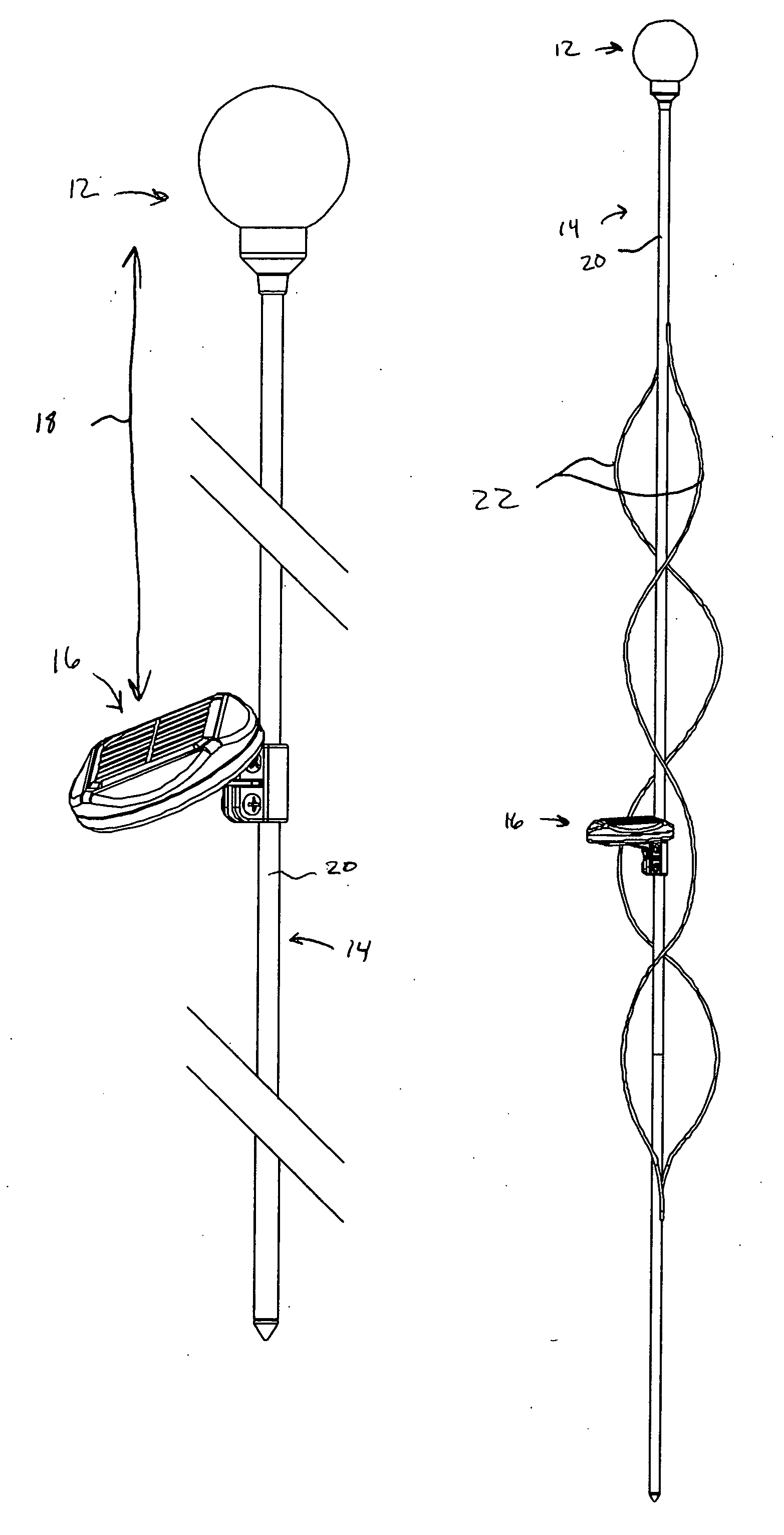Offset solar-powered outdoor lighting apparatus
a solar energy and outdoor lighting technology, applied in lighting and heating devices, lighting support devices with built-in power, lighting and landscaping, etc., can solve the problems of discoloring the solar cell, affecting the purpose of the lighting system, and requiring excessive installation of underground cables, so as to improve visibility.
- Summary
- Abstract
- Description
- Claims
- Application Information
AI Technical Summary
Benefits of technology
Problems solved by technology
Method used
Image
Examples
Embodiment Construction
[0022] Referring to FIG. 1, a lighting system 10 may include a lighting element assembly 12, a support 14, and a collector unit 16. The lighting element assembly 12 typically includes a light producing means such as an incandescent lamp or LED. The lighting element assembly 12 secures near the upper end of the support 12 a distance 18 from the collector unit 16. In typical uses, the collector unit 16 will be positioned at or below the upper boundary of foliage and the like in order to minimize its visual impact. The collector unit 16 typically contains a solar cell and a battery, or like means, for collecting and storing solar energy during daylight hours. The solar cell and battery may be integrated in the collector unit 16 or may secure separately to the support 14. Wiring (not shown) connects the lighting element assembly 12 to the collector unit 16.
[0023] The support 14 may be straight, curved, or sloped, or have a non-deterministic ornamental shape. In the illustrated embodime...
PUM
 Login to View More
Login to View More Abstract
Description
Claims
Application Information
 Login to View More
Login to View More - R&D
- Intellectual Property
- Life Sciences
- Materials
- Tech Scout
- Unparalleled Data Quality
- Higher Quality Content
- 60% Fewer Hallucinations
Browse by: Latest US Patents, China's latest patents, Technical Efficacy Thesaurus, Application Domain, Technology Topic, Popular Technical Reports.
© 2025 PatSnap. All rights reserved.Legal|Privacy policy|Modern Slavery Act Transparency Statement|Sitemap|About US| Contact US: help@patsnap.com



